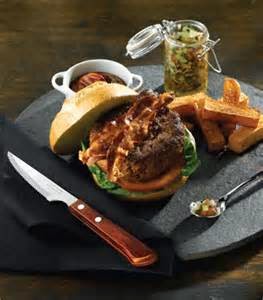WE WANT PROPER CROCKERY!
On 10 February, I blogged about the new trend for using jam jars as vessels for serving cocktails and foodstuffs in bars and restaurants across the UK (see: 'Lunch In A Jar'). But this is only the tip-of-the-iceberg as plates have been replaced by all sorts of building materials, such as slate, wood, cork and brick. Thankfully, there is a growing back-lash to this unnaceptable practice that some chefs seem to think makes their food look good.
Twitter account @WeWantPlates has started a crusade against the trend of serving food on bits of wood and roof tiles and I and other foodies are delighted that people are finally taking a stand. It had to happen. The Campaign for Proper Crockery has started in the food press this week.
It all began with slates, a word whose phonetic affinity to “plates” makes one wonder
whether the first person to put food on a piece of roofing material and charge
money for it wasn’t a frustrated rhymester rather than a zeitgeist-surfing
chef. I must admit that we have a few slates in our house, but only to use as serving plates for tasters or shared starters. Slates are flat, at least, and they’ll go in the dishwasher; if you
put anything too runny on them it’ll dribble over the sides, to be sure, but
there are ways round that (surely this is why at the height of slate use, we also saw the rise of the 'sauce skidmark', a little comma of thick purée
cowering apologetically beside your confit beef cheek, rather than the more
fulsomely applied sauces).
The construction industry
continued to furnish restaurants with inspiration for some time after that.
During his brief residency at John Salt in Islington, the chef Ben Spalding
served up a brick that had been coated with the quintessence of chicken, a
near-mystical inversion of the Seventies Habitat classic, 'the chicken brick' (below). The soup pipe, the dessert hod,
the cheese joist followed and suddenly everything seemed possible. Whether this was a
youthful thumbing of the nose at tradition, or an ironic comment on gentrification, the nation’s diners largely took it in their burgeoning
strides.
Meanwhile, existing taxonomies of
crockery and glassware were also undergoing a radical rethink. The Kilner jar
has a long-standing place in restaurant culture, indicating the foodstuff’s you bring to the table
in one you didn’t make yourself, but someone down the road
- a nice, trustworthy person, the sort of person who puts things in Kilner jars
- did. Now, as I have already said, they’re all over the place. As with the slate-plate, some
functionality is lost: if closed, they’re a struggle to open; if open, the
heavy lid overbalances the jar on to your table; either way, you’re at risk of spillage.
As it happens, we have mainly ceramic plates in our household, including quite a few plain white British plates of all shapes and sizes. They are easy to replace when breakage occurs and there is no problem in matching with other tableware. Like the first Ford motorcar was available in every colour, as long as it was black, our tableware is in every colour too! White plates are beautiful and eloquent, and most of them cost me less than a tenner. And they don’t spill my gravy!
As it happens, we have mainly ceramic plates in our household, including quite a few plain white British plates of all shapes and sizes. They are easy to replace when breakage occurs and there is no problem in matching with other tableware. Like the first Ford motorcar was available in every colour, as long as it was black, our tableware is in every colour too! White plates are beautiful and eloquent, and most of them cost me less than a tenner. And they don’t spill my gravy!







Comments
Post a Comment